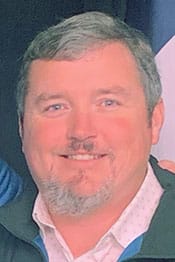The SMART Transportation Division is gaining momentum in legislatures all over the United States. Some state houses have proven friendlier to our cause of rail safety and quality of life for rail workers. This is evident by the legislative victories our union has achieved in the Northeast corridor and on the West Coast.
As our national and state legislative teams continue to lead the way and outwork the railroads’ corporate lobbyists around the country, our organization has begun to make progress in less labor-friendly states.
SMART-TD crossing safety bill signed into law
On April 19th, Iowa Gov. Kim Reynolds of Iowa signed her name to the latest rail safety bill SMART-TD was working toward. This legislation, known as Iowa House Bill 204, has been spearheaded by SMART-TD’s Iowa Legislative Board and its state director, Chris Smith.
H.B. 204’s passage doubled the fine for drivers who roll the dice and ignore crossing gates inside quiet zones. For any railroader who has ever had the misfortune of being involved in a critical incident at a crossing, we know how significant of a win this deterrent is.
Smith and the Iowa Legislative Board fought for this bill not only in the interest of public safety but also for every railroader’s mental and emotional well-being.
Historic support
Our LRs in Iowa orchestrated SMART-TD’s effort in Des Moines well. The results may very well open the door to passing additional bills in Iowa that were previously unimaginable in that state’s political climate.

Smith and his team of legislative representatives passed H.B. 204 through both chambers of Iowa’s Legislature without one representative or senator voting against it! They received votes of 99-0 and 50-0, respectively, in the House and Senate.
In addition to the overwhelming bipartisan support Smith and his board pieced together, they were able to pull off a feat that was even harder to believe — they got both Class I railroads in Iowa to support SMART-TD’s legislation!
Job well done!
SMART-TD wants to thank SLD Smith, the nine Iowa State Legislative Board members, and every man and woman who contributed to this great accomplishment. We are excited to see where your momentum carries Iowa and this organization going forward!
 WASHINGTON – The U.S. Department of Transportation’s Federal Railroad Administration (FRA) published a final rule requiring 40 states and the District of Columbia to develop and implement highway-rail grade crossing action plans to improve public safety. In addition, the rule requires 10 states that have already developed grade crossing action plans, as required by the Rail Safety Improvement Act of 2008 (RSIA) and FRA’s implementing regulation, to update their plans and submit reports describing the actions they have taken to implement them.
WASHINGTON – The U.S. Department of Transportation’s Federal Railroad Administration (FRA) published a final rule requiring 40 states and the District of Columbia to develop and implement highway-rail grade crossing action plans to improve public safety. In addition, the rule requires 10 states that have already developed grade crossing action plans, as required by the Rail Safety Improvement Act of 2008 (RSIA) and FRA’s implementing regulation, to update their plans and submit reports describing the actions they have taken to implement them. WASHINGTON, DC, January 5, 2018 –
WASHINGTON, DC, January 5, 2018 –